Torrance, California, Hgh State Clinic, Hgh Injections, Hrt Doctors
Torrance, California Blood Testing Facilities
 Represents a LabCorp blood testing facility
Represents a LabCorp blood testing facility Represents a Quest Diagnostics blood testing facility
Represents a Quest Diagnostics blood testing facility

Nearby Labcorp Blood Testing facilities:
- Labcorp Center Distance: 2 m, 3500 Lomita Blvd. Suite 102, Torrance, Los Angeles County, CA, 90505
- Labcorp Center Distance: 3 m, 4201 Torrance Blvd Ste 240, Torrance, Los Angeles County, CA, 90503
- Labcorp Center Distance: 4 m, 510 N. Prospect Ave. Suite 305, Redondo Beach, Los Angeles County, CA, 90277
- Labcorp Center Distance: 5 m, 1360 W 6Th St Ste 190, San Pedro, Los Angeles County, CA, 90732
- Labcorp Center Distance: 6 m, 2690 Pacific Ave. Suite 330, Long Beach, Los Angeles County, CA, 90806
- Labcorp Center Distance: 7 m, 11633 Hawthorne Blvd 215, Hawthorne, Los Angeles County, CA, 90250
- Labcorp Center Distance: 8 m, 501 E Hardy St. Suite 150, Inglewood, Los Angeles County, CA, 90301
- Labcorp Center Distance: 9 m, 3680 Imperial Hwy Suite 320, Lynwood, Los Angeles County, CA, 90262
- Labcorp Center Distance: 10 m, 8540 S Sepulveda Blvd Ste 107, Westchester, Los Angeles County, CA, 90045
- Labcorp Center Distance: 12 m, 11411 Brookshire Ave Ste 408, Downey, Los Angeles County, CA, 90241
- Labcorp Center Distance: 13 m, 1190 Pacific Coast Hwy Ste C, Seal Beach, Orange County, CA, 90740
- Labcorp Center Distance: 14 m, 1400 S Grand Ave Ste 612, Los Angeles, Los Angeles County, CA, 90015
- Labcorp Center Distance: 15 m, 10601 Walker St. Suite 250, Cypress, Orange County, CA, 90630
- Labcorp Center Distance: 16 m, 1450 10Th St. Suite 406, Santa Monica, Los Angeles County, CA, 90401
- Labcorp Center Distance: 17 m, 3400 W. Ball Road Ste 104, Anaheim, Orange County, CA, 92804
- Labcorp Center Distance: 20 m, 15064 Moran Street, Westminster, Orange County, CA, 92683
- Labcorp Center Distance: 21 m, 1510 S Central Ave. Ste 520, Glendale, Los Angeles County, CA, 91204
- Labcorp Center Distance: 22 m, 12665 Garden Grove Bl. Ste 212, Garden Grove, Orange County, CA, 92843
- Labcorp Center Distance: 23 m, 2701 W Alameda Ave Ste 203, Burbank, Los Angeles County, CA, 91505
- Labcorp Center Distance: 24 m, 221 E Walnut St Ste 248, Pasadena, Los Angeles County, CA, 91101
- Labcorp Center Distance: 25 m, 705 W La Veta Ave Ste 102, Orange, Orange County, CA, 92868
- Labcorp Center Distance: 26 m, 1201 N. Rose Dr. Suite 202, Placentia, Orange County, CA, 92870
- Labcorp Center Distance: 27 m, 100 N. Tustin Avenue, Tustin, Orange County, CA, 92780
- Labcorp Center Distance: 28 m, 400 Newport Center Dr Ste 202, Newport Beach, Orange County, CA, 92660
- Labcorp Center Distance: 29 m, 1401 Avocado Ave. Ste 208, Newport Beach, Orange County, CA, 92660
- Labcorp Center Distance: 30 m, 500 S Anaheim Hills Rd Ste102, Anaheim, Orange County, CA, 92807
- Labcorp Center Distance: 31 m, 4870 Barranca Pkwy. Ste 290, Irvine, Orange County, CA, 92604
- Labcorp Center Distance: 32 m, 1335 Cypress Ave. Suite 101, San Dimas, Los Angeles County, CA, 91773
- Labcorp Center Distance: 33 m, 113 Waterworks Way Suite 160, Irvine, Orange County, CA, 92618
- Labcorp Center Distance: 36 m, 1900 Royalty Drive Suite 230, Pomona, Los Angeles County, CA, 91767
- Labcorp Center Distance: 37 m, 23961 Calle De La Magdalena St, Laguna Hills, Orange County, CA, 92653
- Labcorp Center Distance: 38 m, 12555 Central Ave. Ste Af, Chino, San Bernardino County, CA, 91710
- Labcorp Center Distance: 40 m, 425 Haaland Dr. Ste 106, Thousand Oaks, Ventura County, CA, 91361
- Labcorp Center Distance: 41 m, 2655 First St. Suite 340, Simi Valley, Ventura County, CA, 93065
- Labcorp Center Distance: 42 m, 558 N. Ventu Park Rd. Suite C, Newbury Park, Ventura County, CA, 91320
- Labcorp Center Distance: 43 m, 1310 San Bernardino Rd Ste 107, Upland, San Bernardino County, CA, 91786
- Labcorp Center Distance: 44 m, 865 Patriot Drive Suite 101, Moorpark, Ventura County, CA, 93021
- Labcorp Center Distance: 45 m, 665 Camino De Los Mares 303A, San Clemente, Orange County, CA, 92673
- Labcorp Center Distance: 46 m, 10801 Foothill Blvd Ste 105, Rancho Cucamonga, San Bernardino County, CA, 91730
- Labcorp Center Distance: 50 m, 3975 Jackson St. Ste 104, Riverside, Riverside County, CA, 92503
- Labcorp Center Distance: 52 m, 6927 Brockton Ave Ste 1B, Riverside, Riverside County, CA, 92506
- Labcorp Center Distance: 53 m, 627 West Ave Q Suite B, Palmdale, Los Angeles County, CA, 93551
- Labcorp Center Distance: 56 m, 300 South A St 103, Oxnard, Ventura County, CA, 93030
- Labcorp Center Distance: 58 m, 31571 Canyon Estates Dr Ste101, Lake Elsinore, Riverside County, CA, 92532
- Labcorp Center Distance: 59 m, 3936 Phelan Rd. Suite F4, Phelan, San Bernardino County, CA, 92371
- Labcorp Center Distance: 60 m, 44725 10Th St West Suite 240, Lancaster, Los Angeles County, CA, 93534
- Labcorp Center Distance: 61 m, 12712 Heacock St. Ste 7, Moreno Valley, Riverside County, CA, 92553
- Labcorp Center Distance: 62 m, 2955 Loma Vista Rd, Ventura, Ventura County, CA, 93003
- Labcorp Center Distance: 63 m, 36320 Inland Valley Dr Ste 103, Wildomar, Riverside County, CA, 92595
- Labcorp Center Distance: 64 m, 255 Terracina Blvd Ste 106, Redlands, San Bernardino County, CA, 92373
- Labcorp Center Distance: 65 m, 29798 Haun Rd Ste 102, Menifee, Riverside County, CA, 92586
Nearby Quest Blood Testing facilities:
- Quest Center Distance: 2 m, 23441 Madison St, Torrance, Los Angeles County, CA, 90505-4735
- Quest Center Distance: 4 m, 520 N Prospect Ave, Redondo Beach, Los Angeles County, CA, 90277-3043
- Quest Center Distance: 5 m, 1294 W 6Th St, San Pedro, Los Angeles County, CA, 90731-2998
- Quest Center Distance: 15 m, 1127 Wilshire Blvd, Los Angeles, Los Angeles County, CA, 90017-3901
- Quest Center Distance: 17 m, 8501 Wilshire Blvd, Beverly Hills, Los Angeles County, CA, 90211-3117
- Quest Center Distance: 19 m, 15141 Whittier Blvd, Whittier, Los Angeles County, CA, 90603-2158
- Quest Center Distance: 20 m, 18800 Main St, Huntington Beach, Orange County, CA, 92648-1718
- Quest Center Distance: 21 m, 9900 Talbert Ave, Fountain Valley, Orange County, CA, 92708-5153
- Quest Center Distance: 22 m, 11180 E Warner Ave, Fountain Valley, Orange County, CA, 92708-7515
- Quest Center Distance: 24 m, 960 E. Green St., Pasadena, Los Angeles County, CA, 91106-2405
- Quest Center Distance: 25 m, 1310 W Stewart Dr, Orange, Orange County, CA, 92868-3838
- Quest Center Distance: 27 m, 801 N Tustin Ave, Santa Ana, Orange County, CA, 92705-3607
- Quest Center Distance: 30 m, 18250 Roscoe Blvd, Northridge, Los Angeles County, CA, 91325-4265
- Quest Center Distance: 31 m, 4950 Barranca Pkwy, Irvine, Orange County, CA, 92604-8648
- Quest Center Distance: 36 m, 1220 La Venta Dr., Westlake Village, Ventura County, CA, 91361-3749
- Quest Center Distance: 37 m, 23521 Paseo De Valencia, Laguna Hills, Orange County, CA, 92653-3673
- Quest Center Distance: 40 m, 2876 Sycamore Dr, Simi Valley, Ventura County, CA, 93065-1550
- Quest Center Distance: 42 m, 2250 S. Main St, Corona, Riverside County, CA, 92882-2534
- Quest Center Distance: 43 m, 1399 E Foothill Blvd, Upland, San Bernardino County, CA, 91786-4060
- Quest Center Distance: 50 m, 9041 Magnolia Ave, Riverside, Riverside County, CA, 92503-3956
- Quest Center Distance: 51 m, 500 Paseo Camarillo, Camarillo, Ventura County, CA, 93010-5900
- Quest Center Distance: 53 m, 4646 Brockton Ave, Riverside, Riverside County, CA, 92506-0103
- Quest Center Distance: 59 m, 6485 Day St, Riverside, Riverside County, CA, 92507-0926
- Quest Center Distance: 62 m, 2150 N Waterman Ave, San Bernardino, San Bernardino County, CA, 92404-4811
- Quest Center Distance: 69 m, 27699 Jefferson Ave, Temecula, Riverside County, CA, 92590-2696
- Quest Center Distance: 72 m, 3601 Vista Way, Oceanside, San Diego County, CA, 92056-4559
- Quest Center Distance: 73 m, 12370 Hesperia Rd, Victorville, San Bernardino County, CA, 92395-4787
- Quest Center Distance: 80 m, 477 N El Camino Real, Encinitas, San Diego County, CA, 92024-1353
- Quest Center Distance: 90 m, 807D Tucker Rd, Tehachapi, Kern County, CA, 93561-2510
- Quest Center Distance: 92 m, 3905 State St, Santa Barbara, Santa Barbara County, CA, 93105-5101
Torrance California Hormone Replacement Therapy Services
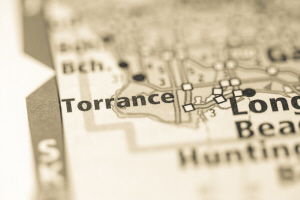
As you grow older, do you feel like you're no longer able to keep up with the joys and responsibilities of life as adequately as you could when you were younger? Are you finding it harder to appreciate the beautiful things in life such as your family, your friends, and your free time? Hormone Imbalance could be playing a role in your declining quality of life, and we may be able to help. Our Licensed Hormone Clinic has helped thousands of men and women just like you recapture the spirit of vitality to achieve an improved quality of life.
Our HRT Doctors work with patients thirty years of age and older. We offer a variety of Hormone Services and Products including Testosterone Replacement Therapy for Men, HGH and Sermorelin for Growth Hormone Deficiency, and HCG for Weight Loss. If you're interested in learning more about the services that we have to offer to patients in and around Torrance California, we strongly urge you to give us a call. We provide free consultation to all potential clients, and we'd be happy to discuss with you in detail what our Hormone Doctors can do to help you improve your Hormone Balance and your life!

Torrance HGH Injections for Somatopause and Hypopituitarism
Human Growth Hormone Deficiency is an exasperating form of Hormone Imbalance which negatively alters the lives of aging men and women. Declining HGH Levels lead to impaired cellular metabolism, which exacerbates symptoms of aging, including unexplained weight gain, depression, mild cognitive difficulties, loss of muscle mass, fatigue, weakened immune health and more. With daily Growth Hormone Shots, it's possible to reduce the severity of these symptoms and improve wellness in the process. We can arrange for IGF-1 testing to measure your Growth Hormone Production and find out if you can benefit from Bio-Identical Human Growth Hormone Therapy!
Therapeutic Sermorelin Shots in Torrance
Along with our widely-prescribed HGH Injections, our Hormone Physicians also utilize the medical benefits of Sermorelin Acetate to treat patients dealing with the effects of Somatopause. Sermorelin has experienced a surge in both interest and prescriptions nationwide as evidence continues to build that Sermorelin is a practical and useful alternative to Recombinant HGH Injections. Sermorelin is cheaper than Human Growth Hormone and may be available for therapeutic use even in you are not yet a candidate for an HGH Prescription. Our Hormone Specialists can help you decide which HGH Boosting Treatment is right for your individual needs!
Low-T Clinics in Torrance California
There are few afflictions that men find more troubling and problematic than Testosterone Deficiency. Andropause may be the time in every man's life when Testosterone Problems rear their ugly head, but this doesn't make it easier to talk about nor endure. It's a sad fact, but many men don't reach out for the Low-T treatment that they deserve, whether out of embarrassment, fear, or resignation. We are here to encourage you to take that first step and talk to a doctor about Testosterone.
Our Low-T Specialists have helped patients all over the state of California recover from the adverse sexual, psychological, and physiological effects of Testosterone Deficiency, and you could be next! We offer a variety of Bio-Identical Testosterone Therapies, including Testosterone Cypionate, Transdermal Patches, Gels, and Testosterone Enanthate!
Torrance California Information and Fast Facts
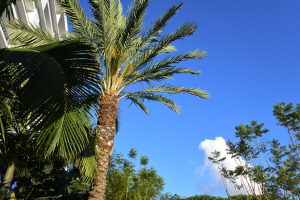
Torrance is one of the many cities that make up the South Bay area located in the southeast corner of the Los Angeles Metro. Torrance is considered one of the top places to live in Los Angeles County because of its overall safety and very low incidence of violent crime. Torrance was established in the year 1912 and became an official city in 1921. Like many communities during this period of industrial boom, Torrance was a designed city, intended for a combination or residential and manufacturing. Torrance became a center for the aeronautical industry after World War Two and has adapted to 21st-century economic changes by developing a burgeoning high-tech sector. Torrance also has the unique distinction of being one of the cities with the highest percentage of citizens of Japanese heritage.
Though Torrance is a part of the South Bay, most of the city is bordered by land, with only around 1½ miles of beaches nestled between Redondo Beach and Roessler Point. Cities that are located near Torrance include Lomita, Carson, Lawndale, Gardena, and Palos Verdes Estates. The largest park in Torrance is Charles H. Wilson Park, but the city is located immediately to the north of the Malaga Dunes and the South Coast Botanical Gardens. Among the many neighborhoods of Torrance are Southwood Riviera, Seaside, Park Plaza, La Terraza, and Old Town Torrance.
All About Torrance, California Geographic Area
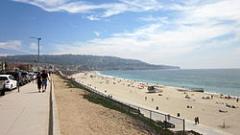

Torrance is a city incorporated in 1921 and located in the South Bay (southwestern) region of Los Angeles County, California, United States. Torrance has 1.5 miles (2.4 km) of shore-front beaches on the Pacific Ocean, quieter and less well known by tourists than others on the Santa Monica Bay, such as those of neighboring Redondo Beach and Manhattan Beach. Torrance enjoys a moderate year-round climate with warm temperatures, sea breezes, low humidity and an average rainfall of 12.55 inches per year.
The Torrance population was 145,438 at the 2010 census. This residential and light-high-tech industries city has 90,000 street trees and 30 city parks. Torrance is the birthplace of the AYSO ae American Youth Soccer Organization.
Torrance was originally part of the Tongva Native American homeland for thousands of years. In 1784 the Spanish land grant for Rancho San Pedro, in the upper Las Californias Province of New Spain and encompassing present day Torrance, was issued to Juan Jose Dominguez by King Carlos III aethe Spanish Empire. It was later divided in 1846 with Governor PRo Pico granting Rancho de los Palos Verdes to Jose Loreto and Juan Capistrano Sepulveda, in the Alta California territory of independent Mexico.
In the early 1900s, real estate developer Jared Sidney Torrance and other investors saw the value of creating a mixed industrial-residential community south of Los Angeles. They purchased part of an old Spanish land grant and hired landscape architect Frederick Law Olmsted, Jr. to design a new planned community. The resulting town was founded in October 1912 and named after Torrance. The city of Torrance was formally incorporated in May 1921. The first residential avenue created in Torrance was Gramercy and the second avenue was Andreo. Many of the houses on these avenues turn 100 years of age in 2012. Both avenues are located in the area referred to as Old Town Torrance. This section of Torrance is under review to be classified as a historical district. Some of the early civic and residential buildings were designed by the renowned and innovative Southern California architect Irving Gill, in his distinctive combining of Mission Revival and early Modernist architecture.
Historically the El Nido neighborhood was home to many European immigrants, such as originally Dutch, German, Greek, Italian and Portuguese people; soon joined by Mexican-American and Hispanic and Latino immigrants; employed in the growing early 20th century agriculture, petroleum, and manufacturing industries, such as the fish canneries.
Rapid new growth in Torrance began after World War II as wartime industries transformed into Post-war Aerospace manufacturers and related technology industries. Large housing developments were built in the 1950s and 1960s to accommodate the new population. Torrance moved on after the closure of some aerospace development and oil refinery plants in the 1990s statewide recession.
Torrance survived the deindustrialization, regional economic slowdowns and national recessions in the 1970s to 2000s. Large-scale Asian immigration in the past couple of decades has transformed Torrance into a diverse and multicultural city.
Torrance is located at 33 °50 a²5 a³N 118 °20 a²29 a³W / 33.83472 °N 118.34139 °W / 33.83472; -118.34139 (33.834815, na118.341330).. The United States Census Bureau boundaries show the city has a total area of 20.5 square miles (53 km2), virtually all land.
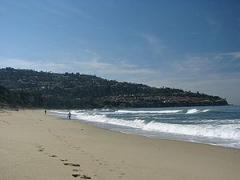
Torrance is a coastal community in southwestern Los Angeles County, as seen on the map above, sharing the climate and geographical features common to the Greater Los Angeles area. Its boundaries are: Redondo Beach Boulevard and the cities of Lawndale and Gardena to the north; Western Avenue and the Harbor Gateway neighborhood of Los Angeles to the east; the Palos Verdes Hills with the cities of Lomita, Rolling Hills Estates and Palos Verdes Estates on the south; and the Pacific Ocean and city of Redondo Beach to the west.
Torrance Beach lies between Redondo Beach and Malaga Cove on Santa Monica Bay. The southernmost stretch of Torrance Beach, on a cove at the northern end of the Palos Verdes peninsula, is known to locals as "Rat Beach."
One of the country's few urban wetlands, the Madrona Marsh, is found in Torrance to explore. It is a nature preserve, on land once set for oil production and saved development, with restoration projects enhancing the vital habitat for birds, wildlife, and native plants. A Nature center provides activities, information, and classes for school children and visitors of all ages.
Residents of an unincorporated area to the east of Harbor Gateway abutting the city of Carson are allowed to use "Torrance" in their addresses by the United States Postal Service.
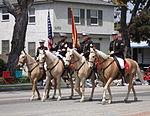
The Del Amo Fashion Center, at 2.5 million square feet (232,000 m ²), is one of the largest malls in the United States. Estimates vary between the second largest (after the Mall of America) and the fourth largest, depending on the measurements used. The current mall was created when Del Amo Center, built in 1958, merged with Del Amo Fashion Square, built in 1970. Once located on opposite sides of Carson Street, a gigantic expansion of the mall spanning Carson Street joined the two centers by 1982, making it the longest mall in the world at the time. In 2005, the east end of the original mall north of Carson Street was demolished to make way for a new open-air shopping center, opened in mid-September, 2006. The new center features upscale clothiers Anthropologie, Coach, H&M and Urban Outfitters as well as the restaurant P.F. Chang's. The housewares retail giant Crate & Barrel opened in what was once a section of the mall parking lot in Spring 2007. Torrance also borders the South Bay Galleria, which resides in Redondo Beach.
The Armed Forces Day Parade in Torrance, which was first produced in 1960, is the longest running military parade sponsored by a city. It is held annually on Armed Forces Day, and runs down Torrance Boulevard. The parade features military vehicles, school bands, and prominent community members.
The Torrance Cultural Arts Center hosts cultural events year-round. Regular performances are provided by the groups belonging to the Torrance Performing Arts Consortium, including The Aerospace Players, Los Cancioneros Master Chorale, South Bay Ballet, South Bay Conservatory, and The Torrance Symphony.
Torrance is also home to the Southern California Live Steamers Miniature Railroad. located at the Southeast corner of Charles H. Wilson Park. Free train rides on actual miniature live steam trains are given on the first Sunday and third Saturday of each month and the 4th of July. SCLS was one of the first live steam clubs in California started in 1946 with original members like Walt Disney, Olie Johnston and Ward Kimball all of Disney fame. The club moved to Torrance in 1986 after leaving the Lomita Railway Museum property.
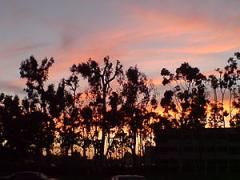
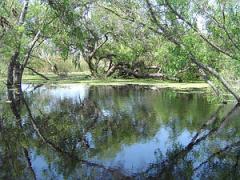
The Torrance City Parks Department directs and maintains the thirty varied Torrance City Parks. They include:
Torrance has a Mediterranean climate or Dry-Summer Subtropical (Koppen climate classification Csb on the coast).
The period of November through March is somewhat rainy, as shown in the table to left.
The Los Angeles area is also subject to the phenomenon typical of a microclimate. As such, the temperatures can vary as much as 18 °F (10 °C) between inland areas and the coast, with a temperature gradient of over one degree per mile (1.6 km) from the coast inland. California has also a weather phenomenon called "June Gloom or May Gray", which sometimes brings overcast or foggy skies in the morning on the coast, followed by sunny skies by noon during late spring and early summer.
The 2010 United States Census reported that Torrance had a population of 145,438. The population density was 7,076.1 people per square mile (2,732.1/km ²). The racial makeup of Torrance was 74,333 (42.3%) White, 3,955 (2.7%) African American, 554 (0.4%) Native American, 50,240 (34.5%) Asian, 530 (0.4%) Pacific Islander, 7,808 (5.4%) from other races, and 8,018 (5.5%) from two or more races. Hispanic or Latino of any race were 23,440 persons (16.1%).
The Census reported that 144,292 people (99.2% of the population) lived in households, 506 (0.3%) lived in non-institutionalized group quarters, and 640 (0.4%) were institutionalized.
There were 56,001 households, out of which 18,558 (33.1%) had children under the age of 18 living in them, 29,754 (53.1%) were opposite-sex married couples living together, 6,148 (11.0%) had a female householder with no husband present, 2,510 (4.5%) had a male householder with no wife present. There were 2,152 (3.8%) unmarried opposite-sex partnerships, and 309 (0.6%) same-sex married couples or partnerships. 14,472 households (25.8%) were made up of individuals and 5,611 (10.0%) had someone living alone who was 65 years of age or older. The average household size was 2.58. There were 38,412 families (68.6% of all households); the average family size was 3.14.
The population was spread out with 31,831 people (21.9%) under the age of 18, 10,875 people (7.5%) aged 18 to 24, 38,296 people (26.3%) aged 25 to 44, 42,710 people (29.4%) aged 45 to 64, and 21,726 people (14.9%) who were 65 years of age or older. The median age was 41.3 years. For every 100 females there were 94.7 males. For every 100 females age 18 and over, there were 91.8 males.
There were 58,377 housing units at an average density of 2,840.3 per square mile (1,096.6/km ²), of which 31,621 (56.5%) were owner-occupied, and 24,380 (43.5%) were occupied by renters. The homeowner vacancy rate was 0.8%; the rental vacancy rate was 5.3%. 85,308 people (58.7% of the population) lived in owner-occupied housing units and 58,984 people (40.6%) lived in rental housing units.
As of the census of 2000, there were 137,946 people, 54,542 households, and 36,270 families residing in the city. The population density was 6,715.7 inhabitants per square mile (2,593.1/km ²). There were 55,967 housing units at an average density of 2,724.7 per square mile (1,052.0/km ²). The racial makeup of the city was 59.16% White, 28.61% Asian, 2.19% Black or African American, 0.41% Native American, 0.35% Pacific Islander, 4.57% from other races, and 4.72% from two or more races. 12.79% of the population were Hispanic or Latino of any race.
There were 54,542 households out of which 31.1% had children under the age of 18 living with them, 52.1% were married couples living together, 10.3% had a female householder with no husband present, and 33.5% were non-families. 27.5% of all households were made up of individuals and 9.1% had someone living alone who was 65 years of age or older. The average household size was 2.51 and the average family size was 3.10.
In the city the population was spread out with 23.0% under the age of 18, 6.8% from 18 to 24, 32.4% from 25 to 44, 23.8% from 45 to 64, and 14.1% who were 65 years of age or older. The median age was 39 years. For every 100 females there were 94.7 males. For every 100 females age 18 and over, there were 91.5 males.
The median income for a household in the city was $76,312, and the median income for a family was $93,473. Males had a median income of $50,606 versus $36,334 for females. The per capita income for the city was $39,118. About 4.7% of families and 5.4% of the population were below the poverty line, including 5.7% of those under age 18 and 7.4% of those age 65 or over.
Torrance is home to the U.S. headquarters of two of the three largest Japanese automakers, Toyota Motor Sales, U.S.A. (overseas office of Toyota), and American Honda Motor Company. Robinson Helicopters are designed and built in Torrance as are Honeywell's Garrett turbochargers, used on automobile engines worldwide. Alcoa Fastening Systems is Headquartered in Torrance as well, producing aerospace fasteners. Pacific Sales, PC Mall and Pelican Products are among the other companies based in Torrance.
According to the City aos 2009-10 Comprehensive Annual Financial Report, the city aos top 10 employers (and # of employees) are:
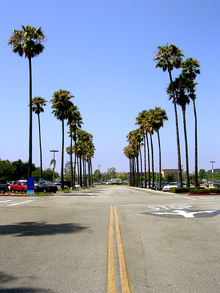
As a major oil-producing region, Torrance was once dotted with thousands of oil wells and oil derricks. Though the oil wells are not as common as they once were, the ExxonMobil refinery in the north end of the city is responsible for much of Southern California's gasoline supply. Torrance was also an important hub and shop site of the Pacific Electric Railway.
Torrance has a busy general aviation airport, originally named simply "Torrance Airport" and since renamed Zamperini Field after local track star, World War II hero and Torrance High graduate Louis Zamperini. The airport handles approximately 175,000 annual take-offs and landings (473 per day ), down from the 1974 record of 428,000 operations. Airport noise abatement is a major local issue. In 2007 the Western Museum of Flight moved to Zamperini Field.
Torrance is also home to the world headquarters of Sunrider International, as well as the U.S. Headquarters of numerous leading automotive aftermarket companies, including: Alpine Electronics, Speed Star Racing Wheels, Tanabe Racing Development, Koyo[disambiguation needed] radiators, Cosworth, and Edelbrock.
Torrance is also home to the main bakery facility for King's Hawaiian, the dominant brand of Hawaiian bread in North America.
Girl Skateboards and footwear companies Lakai and Globe have headquarters in Torrance. Electronics manufacturer Panasonic has a plant manufacturing DVD-RAM and Blu-ray media in Torrance. The United States division of Japanese videogame company Tecmo is also headquartered in Torrance. TabletKiosk, manufacturer of Tablet PCs, UMPCs and Mobile Computing Accessories is headquartered in Torrance.
All Nippon Airways operates its United States headquarters, a customer relations and services office, in Suite 100 at Gramercy Plaza at 2050 West 190th Street in Torrance. The Federal Bureau of Investigation (FBI) raided the office on Thursday March 15, 2007; Laura Eimiller, the FBI spokesperson, did not say why the office was raided. The office resumed operations that afternoon. The raid caused the carrier to not sell ticket reservations for several hours. Aurora Publishing, American subsidiary of Japanese publisher Ohzora Publishing, is headquartered in Torrance.
The City of Torrance is a Charter City. The original Torrance City Charter was voted on and ratified by the qualified electors at an election held August 20, 1946, and filed with the Secretary of State January 7, 1947. The elective officers of the City are the Mayor, six members of the City Council, five members of the Board of Education, the City Clerk and the City Treasurer.
Using the Council/Manager form of government, the City Council, as the elected body, adopts legislation, sets policy, adjudicates issues, and establishes the budget of the City. The municipality is supported by a general fund budget of about $160 million. The City Council appoints the City Manager and the City Attorney.
According to the city aos most recent Comprehensive Annual Financial Report, the city aos various funds had $192.7 million in Revenues, $167.3 million in expenditures, $179.1 million in total assets, $56.1 million in total liabilities, and $140.2 million in cash in investments.
The structure of the management and coordination of city services is:
The city also has appointed Commissions to give residents a greater voice in local decisions. The Airport Commission advises the City Council on matters concerning the Torrance Airport. The Cable Television Advisory Board advises and makes recommendations in the area of policies and procedures in Public-access television cable TV interests, scheduling public-access programming, facilities, and equipment for the community and Public-access television channels, and disbursement of Foundation funds. The Civil Service Commission is responsible for all examinations for the original selection and promotion of city employees. The Commission on Aging deals with the needs and issues confronting senior citizens in the community. The Cultural Arts Commission assists the City Council in providing for and promoting opportunities for the artistic and cultural development of citizens. The Disaster Council conducts regular surveys of disaster readiness in the City and disseminates alert information to the public. The Environmental Quality Energy Conservation Commission deals with commercial sign reviews, oil production and oil site maintenance, animal control, beautification awards, community noise control, energy conservation, property nuisances, and property maintenance. The Library Commission makes recommendations regarding the operation of the library system. The Parks Recreation Commission advises and makes recommendations on matters pertinent to a public park and recreation program. The Planning Commission works with the Community Development Department in the preparation of master plans and zoning studies that affect the growth and development of Torrance. The Traffic Commission makes recommendations to the City Council on street and traffic improvement. The Water Commission makes recommendations for assuring high-quality non-interruptible water service at the lowest possible cost. The Youth Council is an advisory body to City Council on matters pertaining to youth in Torrance.
The United States Postal Service operates the Torrance Post Office at 2510 Monterey Street, the Marcelina Post Office at 1433 Marcelina Avenue, the Walteria Post Office at 4216 Pacific Coast Highway, the North Torrance Post Office at 18080 Crenshaw Boulevard, and the Del Amo Post Office at 291 Del Amo Fashion Square.
HealthCare Partners Medical Group's corporate headquarters is in Torrance on Vermont Ave. HealthCare Partners is one California's largest medical groups.
The Los Angeles County Department of Health Services operates the Torrance Health Center in Harbor Gateway, Los Angeles, serving Torrance.
The Chief of Police is John Neu.
The City of Torrance operates a main library facility (named after former mayor Katy Geissert) in the city Civic Center, plus five branches at locations throughout the city.
Highways and freeways in the region include I-110, I-405, SR 91, SR 107, and SR 1. Rail transport includes the historic Harbor Subdivision which carries Union Pacific and BNSF lines. The city also has Torrance Transit, LACMTA Metro bus, and LADOT services. Zamperini Field (IATA: TOA ICAO: KTOA) is a general aviation airport and serves no commercial airlines. However, Torrance is within 15 minutes of both Los Angeles International Airport and Long Beach Airport.
In the 2010 Rose Parade, City of Torrance's entry won the top Lathrop K. Leishman trophy for its Garden of Dreams float, judged as the "Most Beautiful Non-Commercial" float.
In the state legislature Torrance is located in the 28th Senate District, represented by Democrat Ted Lieu, and in the 53rd Assembly District, represented by Democrat Betsy Butler. Federally, Torrance is located in California's 36th congressional district, which has a Cook PVI of D +11 and is represented by Democrat Janice Hahn.
Torrance Unified School District (TUSD) was established as a school district in 1947 and unified in 1948. The district encompasses all of the City of Torrance, bordered by the Palos Verdes Peninsula on the south, the cities of Redondo Beach and Gardena on the north, the City of Carson on the east and the Pacific Ocean on the west. The district's jurisdiction includes approximately 21 square miles (54 km2), and it operates 17 elementary schools, eight middle schools, five high schools (one of which is a continuation school), three adult education centers, and a child development center.
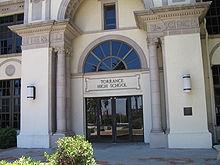
The Torrance Unified School District's five high schools are:
The Torrance Unified School District's eight Middle Schools are:
The Torrance Unified School District's 17 Elementary Schools are:
Area districts have created the Southern California Regional Occupational Center (SCROC) to teach technical classes to their students and to local adults. TUSD is a participant feeder district of the California Academy of Mathematics and Science or CAMS, a mathematics and science magnet high school, administered by the Long Beach Unified School District.
Two private high schools are also located in Torrance:
Eight private elementary/middle schools are in Torrance: Ascension Lutheran School, Riviera Hall Lutheran School, Riviera Methodist School, South Bay Junior Academy, Nativity Catholic School, First Lutheran School, St James Catholic School and St Catherine Laboure Catholic School.
Torrance lies within the El Camino Community College District and El Camino College uses a Torrance mailing address, but the campus is actually located just outside the city limits in the unincorporated Los Angeles county area known as El Camino Village. El Camino College was founded in 1947, and the campus covers 126 acres. As of 2011, the college enrolls over 25,000 students each semester.
The Daily Breeze, a 70,000-circulation daily newspaper, is published in Torrance. It serves the South Bay cities of Los Angeles County. Its slogan is "LAX to LA Harbor". Herald Publications, media group started the Torrance Tribune, a community newspaper, which was started November 2010, it has a distribution of 15,000 newspapers to single-family homes and businesses in the City of Torrance, only.
In 1973, Torrance established a sister-city relationship with Kashiwa, Chiba, Japan, as part of the Sister Cities International program. Since then, citizens of Torrance have regularly engaged in cultural exchange with Kashiwa through the guidance of the Torrance Sister City Association, which facilitates a Japanese cultural festival, a yearly student exchange program, and contact between officials of the two cities. North High is the official sister high school of Kashiwa Municipal High.
In 1986 the United States men's national soccer team was in the last game of the qualifying tournament, the U.S. needed only a draw against Costa Rica, whom the U.S. had beaten 3 ae0 in the Olympics the year before, in order to reach the final qualification group against Honduras and Canada. U.S. Soccer scheduled the game to be played at El Camino College, an area with many Costa Rican expatriates, and marketed the game almost exclusively to the Costa Rican community, even providing Costa Rican folk dances as halftime entertainment. A 35th minute goal by Evaristo Coronado won the match for Costa Rica and kept the United States from reaching its fourth World Cup finals.
Many Ruthless Records artists recorded their albums at the Audio Achievements studio in Torrance, including N.W.A. with Straight Outta Compton, Eazy-E with Eazy-Duz-It, J. J. Fad with Supersonic (all three from 1988) and The D.O.C. with No One Can Do It Better (1989); each of those albums has been certified platinum by the RIAA.
Torrance is also known for its multicultural diversity of East Asian and European ethnic groups, and even many Polynesians, Indian Americans, Arab Americans and Persian Americans. Some of the city's sections like El Nido, Moneta, Clifton along with Redondo Beach and Hollywood Riviera are examples of the ethnoburb phenomenon.
Historically, local whites tolerated the presence of Japanese American, Portuguese American and Mexican residents, but not much support for African Americans to relocate in their neighborhoods until the 1980s, which is the common racial consciousness in majority white neighborhoods even at present. Several members of the KKK were active in local politics in the 1920s and 1930s, which was also the case in nearby Inglewood, California and Anaheim, California as well.
These Torrance landmarks are on the National Register of Historic Places:

Word Count: 4358






